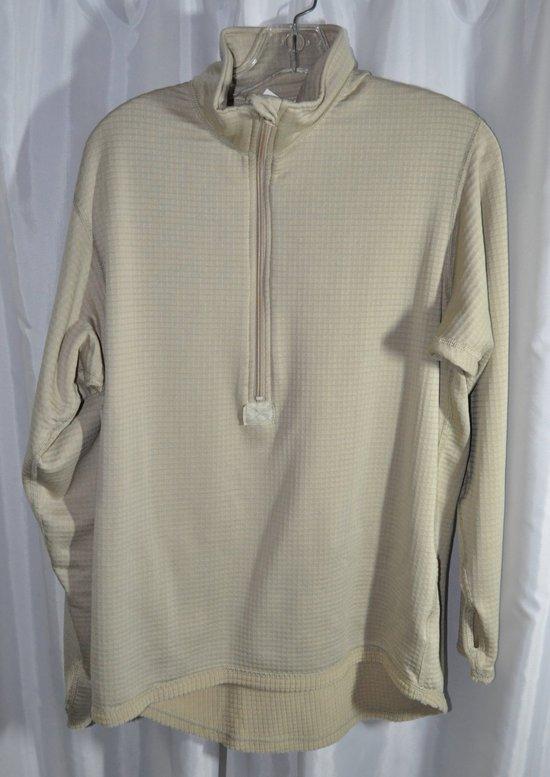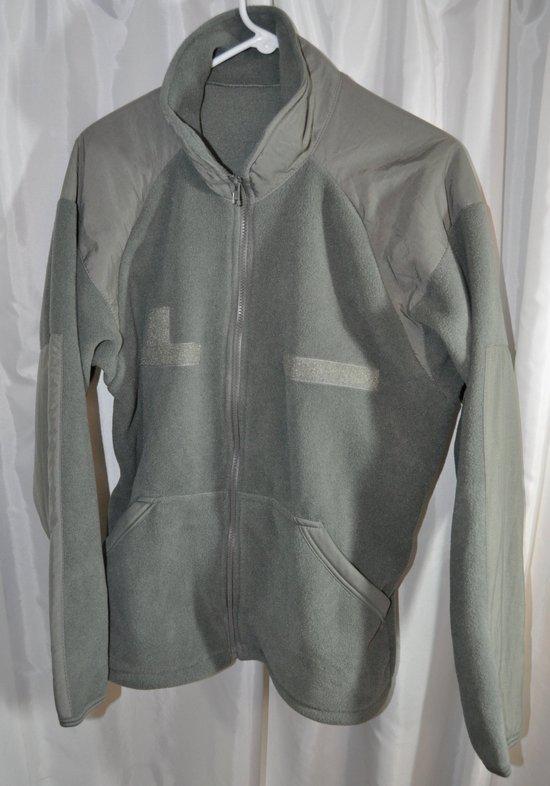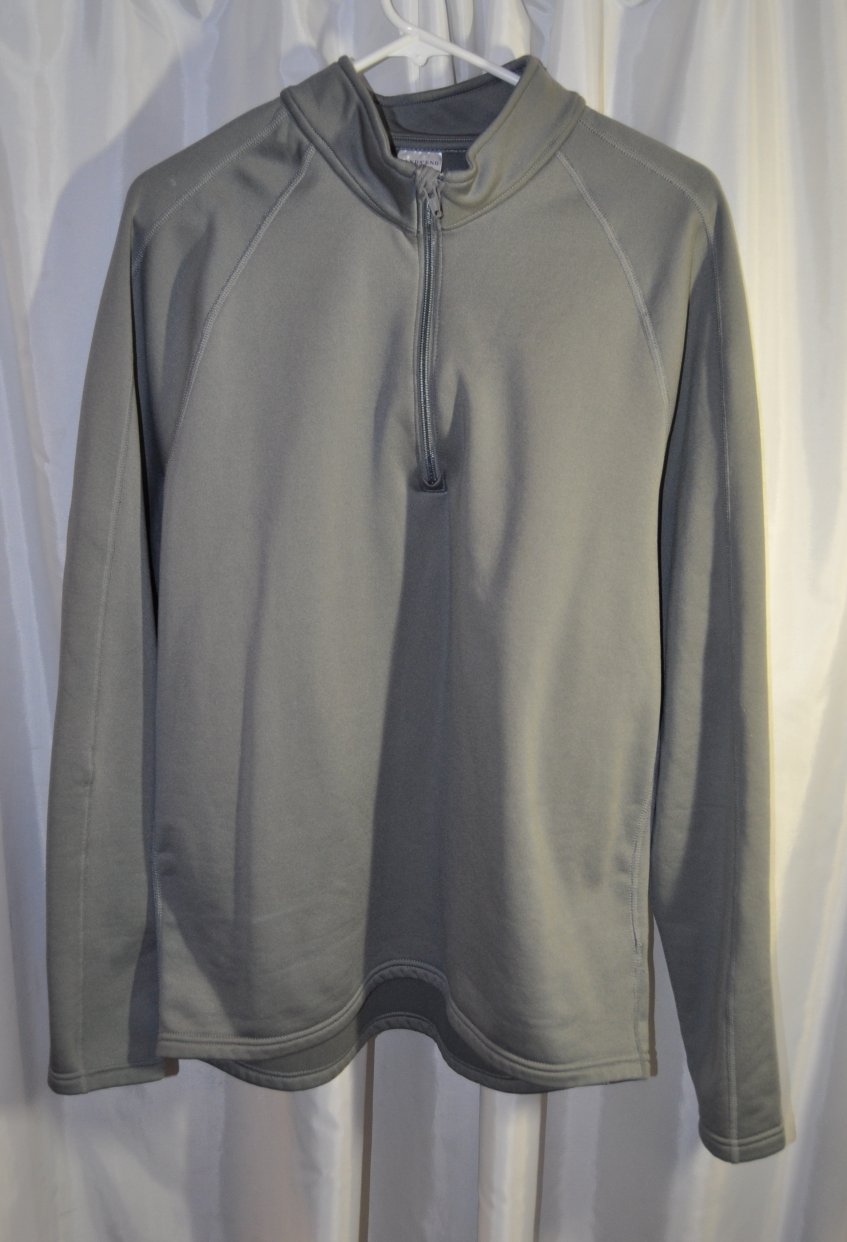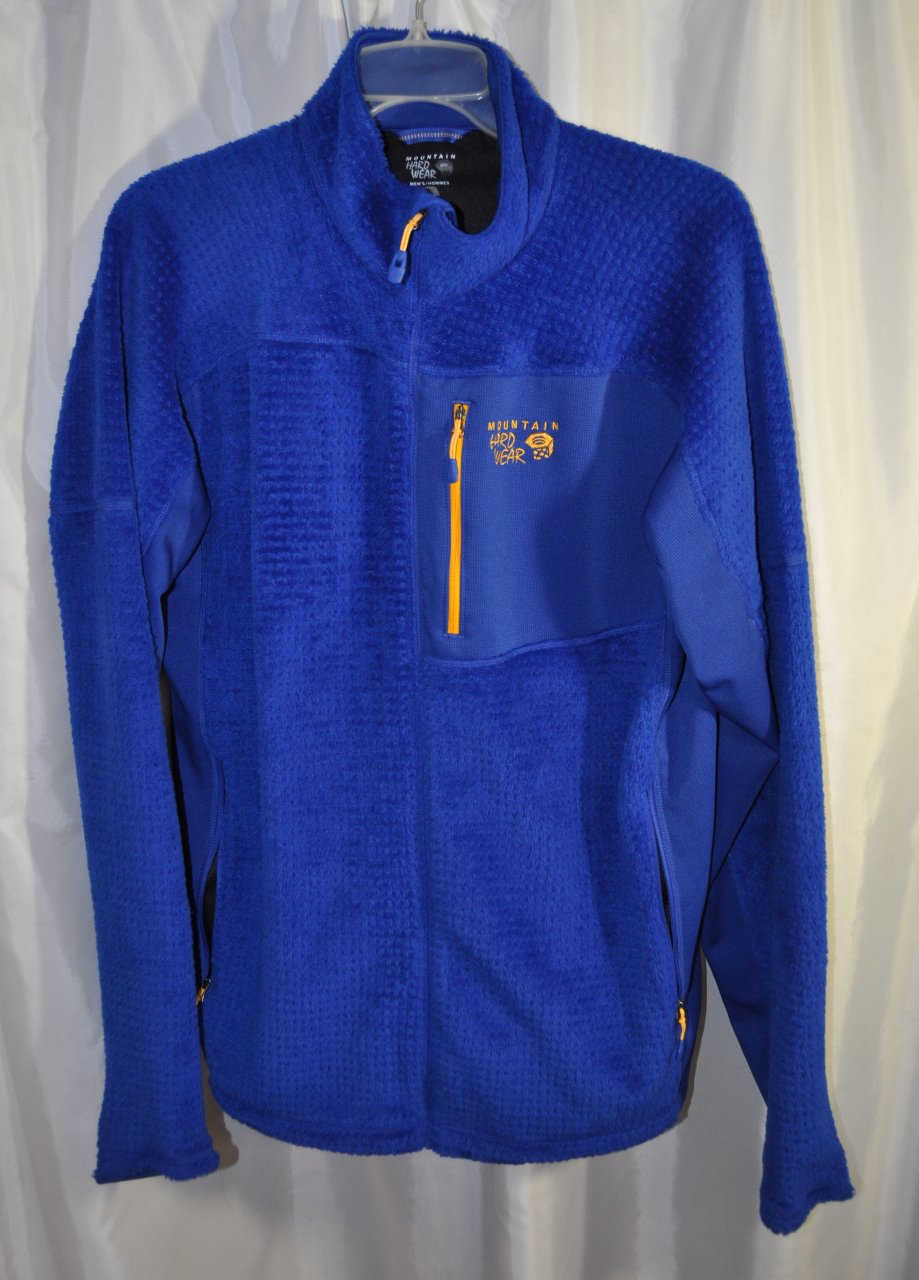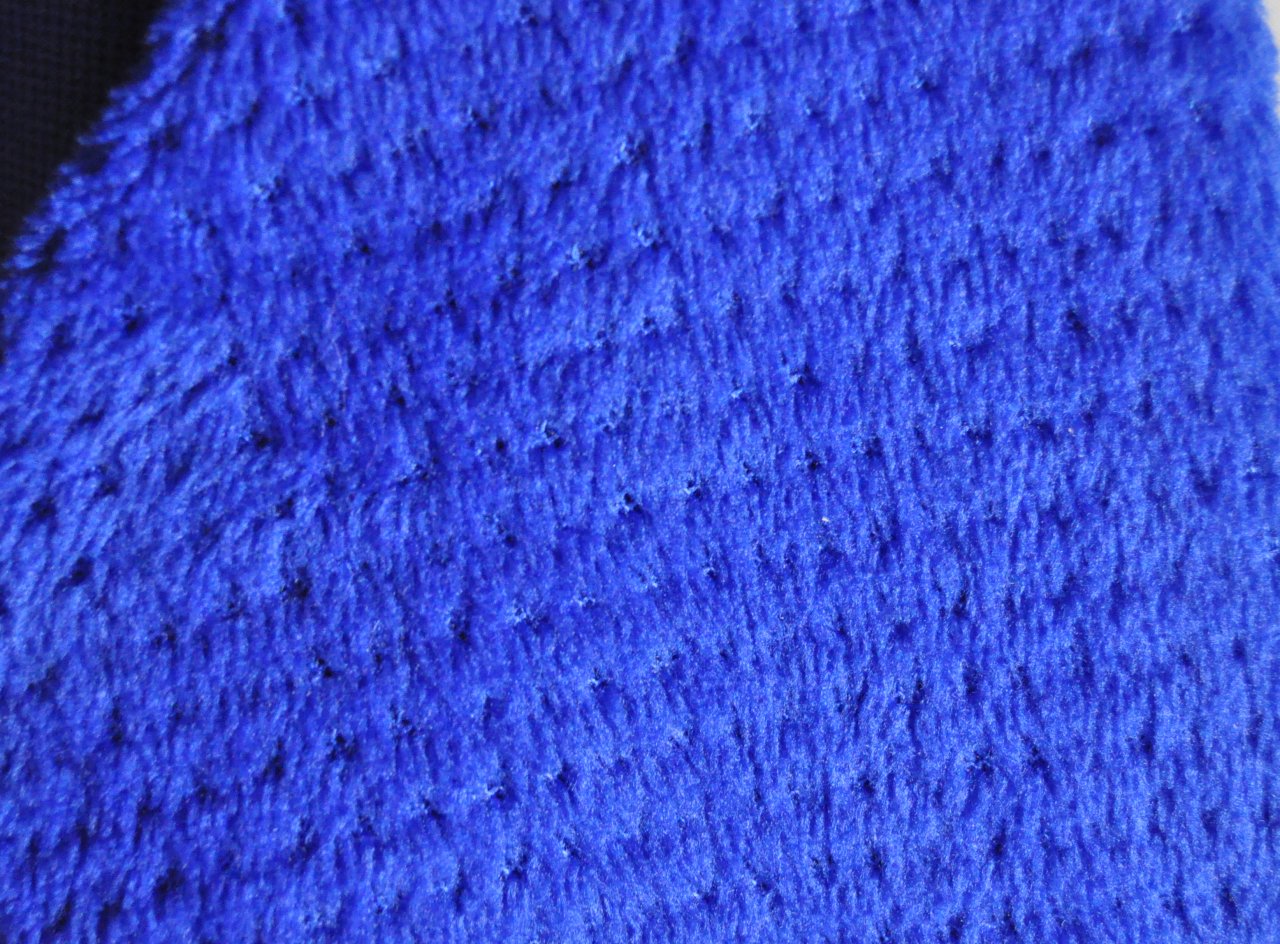Topic
Best Insulation System for Cold Rainy Mountains
Forum Posting
A Membership is required to post in the forums. Login or become a member to post in the member forums!
Home › Forums › Gear Forums › Gear (General) › Best Insulation System for Cold Rainy Mountains
- This topic has 123 replies, 2 voices, and was last updated 2 years, 7 months ago by
 Eric Blumensaadt.
Eric Blumensaadt.
-
AuthorPosts
-
Apr 3, 2016 at 5:47 pm #3393748
Rob, I’m sorry but I don’t know the answer. I don’t own a scale to weigh my issue stuff, and I can’t even “guestimate” because I don’t have any civilian Patagonia stuff to make a comparison against. There isn’t really any reason for me to buy civilian gear. The Army gave me more outdoor apparel than I can keep track of.
I think the best I can do is point you to the manufacturers of Level 2 so that you can email them if you care to.
The most common PCU Level 2 is from Sekri. But sometimes, we get the Beyond Level 2. I’m not sure if Beyond is actually a PCU contractor or if some HQ element that we fall under made an outside purchase. We get so much gear that it’s hard to know where it all comes from. The Beyond feels heavier to me than the Sekri.
The ECWCS Level 2 seems to weigh the same as the Sekri. Other than being sand-colored instead of brown, I think the ECWCS Level 2 is the same shirt as the Sekri but with thumbholes and a little flap of cloth at the base of the zipper. There is an absolute crapload of different manufacturers of the ECWCS stuff and I’ve never bothered to check if they weigh the same.
Sorry that I can’t be more helpful. I use this forum to stay abreast of industry developments rather than focus on gear weight. I don’t have a clue what my stuff weighs other than “feels light” or “feels heavy.”
Apr 3, 2016 at 6:11 pm #3393752Thank you Kris…Much appreciated!
Apr 3, 2016 at 6:26 pm #3393755By the way, that PCU Level 2 looks like the Patagonia R1…smooth face, grid fleece inner. Easy to layer over because of the smooth face, but sort of surprised by the spandex content. 100 wt fleece would seem to dry faster, but it’s more difficult to pull on another fleece layer over 100wt rather than the smooth slippery face of a garment like the R1.
Apr 3, 2016 at 7:41 pm #3393766Rob
its not so much that 100 wt fleece dries faster, it may not
its that the grid fleece is often made to fit SNUG .. When its so soaked that theres no wicking, it will tend to cling to you putting the moisture right next to your skin/base
a “normal” fitting fleece is better than a Snug one in constantly wet conditins IME
as i said previously upthread if you have a light down sweater you can put the fleece OVER it to preserve the loft (make sure you wring out or use dry base layers) as the moisture will migrate outwards to the fleece
as to your question on fabric thermal pro is the most certain as long as its nice and fluffy on the inside
however other fabrics work quite well …. I have a marmot fleece thats 60% wool that might be as good as my thermal pros …. Because its exceptionally fluffy and has a very open weave
i think that the actual fabric is only one part of the equation … Fluffy, fuzzy and fit is the other
;)
Apr 3, 2016 at 7:57 pm #3393771Once again, Eric, thanks….It’s great having people like you who are willing to share their wisdom and experience on these forums!
Apr 3, 2016 at 8:31 pm #3393776Eric, have you tried wearing a thermal pro and no base layer? Based on what you have said that should be the warmest when wet.
Apr 3, 2016 at 8:47 pm #3393780Justin
all the time …. Once your base gets soaked inside the shell it doesnt do anything except for retain water … Next to your skin
and most base layers are nice and smooth, while fleece tends to be fluffy and fuzzy
i mentioned the trick about simply putting that fluffy fleece right against the skin once yr base gets wet
in fact its easy to do a test …. Jump in the shower on cold water in yr base + fleece, get everything soaked, wring it out and walk around tonight for a bit
then try taking off you base layer and only have the thermal pro
is it any better …. At the very least it should work just fine
The reason you need a base layer though is that until you are truly soaked you dont want to wear the fleece under the rain jacket if you run hot
or for times its not raining
as a side note IME the thinnest base layers work best as i mentioned as they absorb the least amount of moisture and are less likely to overheat you when wearing the shell
eveything else should be additive …. Ie you only add what you need once you get a bit chilled
thicker base layers dont allow the same flexibility
;)
Apr 3, 2016 at 9:53 pm #3393791Edward …. No thanks needed
ive been THAT person … The guy who almost went hypothermic in the rain
i think everyone in the PNW who goes out experiences that at least once
theres tons of folks out there who know tons and my posts only reflects what ive learned, others may have different ideas
i will say though that i was scratching my head a few years ago on how i got VERY chilled in my cap 4 in the freezing rain … Till i figured out its not a “miracle” layer, it wont make up for a proper fleece
;)
Apr 4, 2016 at 10:27 am #3393867Hiking in the rain and packrafting are different conversations, and to a lesser extent packrafting with and without a drysuit are also different conversations. Plenty of good info here, but those who are rushing to answer might do better to better consider the original question, first.
Last month, for a ski in and out packrafting trip without a drysuit I had the following for my upper body:
- Cap 4 crew
- Alpine Start hoody
- Rab Novak (270 g/meter plain fleece hoody)
- Rab Strata jacket w/ sleeves cut off
- Haglofs Ozo
Bulky and heavy and less than ideal on paper, but very functional. I was always warm enough, if not dry, both while skiing through rain and sleet, and while paddling through rain and snow. On a few occasions I was moving while wearing all of the above, and by regulating both exertion and layering was able to dry things thoroughly.
For summer I’d swap the Novak for a 100 wt fleece pullover.
Wicking goes both ways, and long sleeved wicking baselayers can be a problem when tons of external moisture is present. I’ve found Cap 4 is be much less problematic than “standard” baselayers in this regard, and I’ll keep using it for cold and wet, both packrafting and plain ole hiking. It dries well enough (in all circumstances) and ticks more boxes better than anything else.
Apr 4, 2016 at 3:16 pm #3393920Some fleece weights and details:
ECWCS Gen II L2 top, like Patagonia R1. Men’s medium/regular fits like a civilian large, 10.8oz.

Side note: If you buy any of these military versions, make sure they are real Polartec and look out for cheap knock-offs like Rothco. They should have Polartec labels, just like civilian gear. There are a number of US based companies that turn out military issue garments and I haven’t seen any difference in construction/quality/weight. Cabela’s has their own line of ECWCS garments that seem just fine to me, but hav a boxy cut and run a bit lIarger/heavier than a Patagonia equivalent. They do have great sale prices now and then.
ECWCS Gen III L3 like R3 fabric, in a medium/regular (civilian large): 17oz

Military 200w fleece jacket with fabric reinforcements and pit zips (civilian large): 17.6oz

Eddie Bauer First Ascent Cloud Layer Pro fleece top, large, 10.4oz. Light fluffy stuff like a super 100w to me.

Lands End Power Stretch top, large/tall, 11.6oz

Eddie Bauer First Ascent Hangfire jacket, large, 15oz. Mostly like Power Stretch, but with a heavier harder finish fleece in the torso and arm tops

Mountain Hardwear Monkey Man Grid Fleece jacket, XL (same measurements as the Gen III L3 medium/regular above) 15.6oz. Polartec Thermal Pro fabric


I went to the Patagonia Store in Seattle yesterday and got a look at the new R3 jacket that has long grid fiber on one side (like the MH above) and a shaved version on the other side. The theory is that you can reverse it for better insulation or better wicking. 18oz advertised weight for the hoody version. See http://www.patagonia.com/us/product/mens-r3-regulator-fleece-hoody?p=25772-0
Apr 4, 2016 at 4:18 pm #3393927Anonymous
Inactive+1 to what Dave C. wrote.
I would also add that while Cap 4 type baselayers are designed to be snug fitting, you can always size up so that it’s not as snug. I have a crew version which is snug fitting on me, which i like to use in more mild conditions. I have a looser, over sized hoody one i like to use in more extreme conditions whether very cold or cold and very wet.
Also, in some ways when it comes to more extreme conditions, i like my Brynje polypropylene baselayer the most. I could get totally soaked, and that would still feel dry, and keep a decent sized layer of warm, dry, insulating air next to my skin. Granted, if it’s cold enough, you will still need a layer or two over it, that semi insulates while wet, but that always dry layer next to the skin makes a big difference at least feel/perception wise.
The main problem with the Brynje top is that it builds up odor fast, easy, and retains it, and is a bit less comfortable wear wise. The fact that it doesn’t wick like a traditional baselayer doesn’t seem to matter much, and like Dave said, wicking is a two way street. Wicking baselayers that touch the skin, can and will more readily absorb moisture from the outside if those layers get wet. The Brynje absorbs practically no moisture at all, because one–it’s polypropylene and two, it’s a fishnet design with large holes/voids. When i pull it out of the wash when done, it feels pretty much dry.
Oh, and i do plan to take up Eric’s challenge–not because he made it, but i was planning on testing certain things anyways. I was hoping winter might last a bit longer around these parts, but it became rather warm, rather quickly and mostly consistently awhile back.
But the plan is to literally jump in a freezing or near freezing stream, while it’s either below freezing out, or while it’s cold and with cold rain and not to wring out any layers.
Baselayer will be the Brynje PP top, Cap 4 bottoms. Insulating layers will be 1/2 inch reticulated “Dry Fast” type open cell foam sewn between mesh inner, and very breathable, thin outer nylon (new Robic from RBTR). This type of open celled PU type foam, is much more air and water permeable than the other versions. The theory being tested is that the foam will maintain loft even while soaked (more inherent structure/structural strength and compressive resistance than other puffy insulations–even more than Apex or Thermal Pro and that even when fully dunked in water, the water will drain quickly from it and what moisture is retained will dry out fast from body heat. The other part is that the PP fishnet will maintain some dry’ish air space next to the skin for more immediate comfort.
While i won’t take off layers to wring them out, i will probably push on the foam to speed up the draining process. While i can’t be certain until testing it out, i suspect that it will be even superior to what the US military uses. I do not plan to warm up with activity, unless i become dangerously cold.
I will document all this with video. Hopefully i can get my spouse or someone to hike with me to make it easier and as a safety margin.
I may not have to wait till late Fall–there is some rare weather coming briefly (which i just found out about). This coming Saturday is forecasted to have a high of around 46, with a low of 29 and snow to cold rain. And that is forecasted for the nearest town, not in the hills and woods where i will be (should be at least a few degrees cooler than the town forecast). The mountain/hill streams should still be sufficiently cold enough to normally induce hypothermia. It’s not ideal–i would prefer to test in the heart of winter, but it will do to see if it basically works or not. (I will have backup, dry, traditional insulation for in case).
Apr 4, 2016 at 4:31 pm #3393931I agree with feeling dry with fishnet…I have some Aclima Coolnet tops and they are nice. They are not quite as comfortable as cap 4, so I wear the cap 4 more in the winter. I did just pick up a Capilene lightweight shirt…its super lightweight grid fleece. I haven’t been able to wear it outside yet though but it just putting it on it seems like it will be much better than old Cap 2.
Also, Justin, be careful when you do your test…have somewhere warm to bail out to and don’t do the test without someone else there….you probably know this though.
By the way, Dale, thanks for the pics!
Apr 4, 2016 at 5:29 pm #3393940interesting on the reversible R3, I’ve been toying with the same idea on my Cap 4 to play around with a “paramo” like setup- the idea that it would wick outward better with pile (square side) out
I purchased a wool Aclima fishnet top this winter; I’ve only had it out a couple of times, but thus far I like it for a cold weather base top
Apr 5, 2016 at 11:11 am #3394028Good job everyone. One of the best threads on BPL in quite a while.
Apr 5, 2016 at 1:36 pm #3394074
Theres one thing that hasnt been gone over yet …. Pockets
now folks might not think its a big deal, and on pullovers its a moot point
but many fleece jackets are let down in wet conditions by their pockets
you can see the differences above with the (from right to left) mec incumbent, dead bird covert and EB cloud micro
what you are really looking for is MESH pockets, the more mesh the better … And little spandex or nylon content as they absorb water and are slower to dry
above the mec has the best mesh pockets, the dead bird the next with partial mesh and the EB the worst (nylon and spandex, not mesh)
a simple experiment will show why … Simply soake the fleece in the bathtub, wring it out and go for a walk in good conditins…
what youll find is that with the more solid pockets with more nylon/spandex … The fleece part start drying out, but the pockets stay damp much longer
in short other parts in direct contact with the fleece will start warming up while yr belly stays wet against non mesh pockets
when you want to see if a fleece is truly made for wet conditions always look at the pockets
Now all is not lost if you have a fleece with those evil pockets
in truly wet conditions simply turn the fleece INSIDE OUT so that the base/skin contacts the fuzzy fleece and not the wet nylon/spandex
however this only works on homogeneous fabrics that are the same either side such as polartec classic, etc …
for bicomponent fabrics or non uniform surfaces …. Well any designer that puts solid pockets on those should be shot anyways (unless its fleece pockets)
Mike ….
polartec powerdry is bicomponent … Basically its designed to work bumps in with capillirary action
i dont recomend turning it inside out
which brings up another point about moisture management in bags which ill post up in a bit
VERY hungry right now
;)
Apr 5, 2016 at 3:57 pm #3394113What I have been using,
OR Echo ss or ls
Mountain Hardwear Microchill Lite or Patagonia R2
Epic wind jacket and/or Poncho/tarp or OR Rampart
Does great in rainy and cold conditions.
Apr 6, 2016 at 8:39 am #3394247“but many fleece jackets are let down in wet conditions by their pockets”
Pockets and cuff/hem binding have often been my bane. The aforementioned Rab Novak has nice non-absorbent, non-stretch mesh for pocket backing, and plain finished fleece cuffs, but the inside binding used to form the hem drawcord tube holds moisture longer than any other part of the jacket. Waaa.
Apr 6, 2016 at 8:55 am #3394253
One word: pockets…
Apr 6, 2016 at 9:38 am #3394266One of the reasons why I like my pullover so much is that there is no draw string hem, no elastic on the cuffs and one simple zipper. No pockets.
When skiing a couple of weeks ago, my friend noted how the black fleece looks more like purple due to the UV light over the years. That’s how much I use it.
Simple is good I find.
Apr 6, 2016 at 10:38 am #3394285Luke, my cold weather setup for packrafting with a drysuit (kokatat GFER) has me wearing a thin, long-sleeved wool base layer, cap 4 hoody and an ArcTeryx Nuclei. I find this works great for on and off the water and keeps me just warm enough around camp in cold, wet weather until I get into my quilt. I fold down the cap 4 hood inside itself, and do similarly with the Nuclei and don’t find they bother me too much beneath the latex neck gasket. I find I need both hoods to keep me warm sleeping in a quilt, but if I were in a bag I’d probably get a puffy w/o a hood for ease of wear under the drysuit.
Apr 6, 2016 at 11:27 am #3394295Dave,
How does your Rab Novak deal with external moisture? The reason I ask is that I’ve been looking at Polartec Thermal Pro fleeces and many of the newer ones seem to have the same honeycomb pattern on the outside as the Novak.
Apr 6, 2016 at 12:19 pm #3394301anyways now that ive satiated my hunger …
to follow up on flipping fleeces inside out …
the basic premises is that whatever you want to dry off should be exposed directly to heat as closely as possible
lets take this to down (jackets, bags, quilts)
youll probably notice that down almost always gets damp in the OUTER part of the bag … your body heat pushes the moisture outwards and it condense there
over time if you dont do anything about it itll lose loft … while drying it in the sun and wind will usually take care of it, this isnt always possible in constant rain conditions
also the stuffing of damp down in the stuff sacks can spread the moisture around, leading to the down losing more loft …
one old trick is simply to flip the down quilt/bag/ jacket inside out and apply your body heat to the damp side to dry it faster
this works best with homogenous garments and bags … that is more or less similar fabric on either side
add in a HAWT nalgene and youll really start pushing out the moisture
throw on your (not too damp) fleece, synth poofayz, or other garments on TOP of the bag, and youve got somewhere for the moisture to migrate to and moved the dew point … it also protects against some condensation
so next time you go to sleep, look for which side of your bag is damper … and put that against your skin
the same goes for down jackets that are getting damp, flip it … and put that fleece or synth poofay OVER it
;)
Apr 6, 2016 at 12:27 pm #3394302I like the honeycomb Polartec. It’s denser than Polartec HiLoft, but seems just as warm, and dries at least as fast. It has a smidge of windproofing, too. Only real knock on it is that the outer side is not nearly as soft and snuggly as HiLoft or synchilla.
The Novak is just about perfect in my book, only issues are the drawcord liner fabric and the cuffs, which as stock are very wide. Taking the cuffs in is a reasonably simple home mod.
Apr 8, 2016 at 4:23 pm #3394866I hate the feeling of a cold wet base layer against my skin in the rain, and thought there must be a better solution for hiking in those cold wet alpine conditions. So some time ago I did the cold wet fleece test, here’s how it went.
I have a Patagonia Capilene 1/4 zip top, texture like fleece, non grid. It weighs 9 ozs dry, in a small. I got it second hand and have no idea what model it is. Anyway, I soaked it in a bowl of 10C/50F water and wrung it out, and it then weighed 25 ozs, ie with 16 ozs of water in it. I then put it on without a base layer, and oddly enough It felt warm immediately against the skin, which surprised me. I then went hiking up the 1500 ft hill behind my house, in wet mist and drizzle at 5C, 41F. I was carrying a backpack with 20 lbs in it, and was also wearing a Packa jacket, which is sil nylon so totally non breathable.
When I got back 2-3 hours later, the “fleece” weighed only 14 ozs, so that is the heaviest it would ever get providing my jacket did not leak, and probably less than that if it had been dry to start with. It was draining water the whole time out of the bottom, and a quick squeeze of the wrists and waist would get loads of water out, and the rest of it stayed warm. It would have dried out on me had I kept it on, and I would have been quite happy to keep it on around the house if I hadn’t been dripping water everywhere.
So at the moment that is my solution to hiking in the mountains in the wet below 10C/50F. My pack, straps, and hip belt were only slightly damp too, having had the Packa cover over it. With this system my jacket can’t wet out and leak because it’s already totally water proof. Condensation just runs off between the jacket and the fleece. Although I was damp, I was cosy warm, not getting chilled, and not overheating either. If the rain lets up for a minute you can unzip the jacket, riggle out of the arms and just let the jacket hang on the sack while you air off, all without breaking step.
i was about to buy a Cap 4 to try in the rain, but after reading Eric’s comment about wet, close fitting base layers next to the skin, I think I’ll save the money Thanks Eric!
Apr 8, 2016 at 8:10 pm #3394935Well I tried fitting my raft and gear into my pack and boy is it a lot of stuff. I’ll be carrying a packraft, drysuit, helmet, 10 days of food and camping gear. So bulk is just as important as weight (off trail travel is in the plan). Heavy fleeces or multiple fleeces are out for sure.
I’ve ordered a midweight capilene layer to play with since I’ve never used the stuff. Once I get a feel for that I’ll decide how warm that is and whether I want to top it off with synthetic or down. I’m leaning synthetic vest+thick baselayer at this point.
-
AuthorPosts
- You must be logged in to reply to this topic.
Forum Posting
A Membership is required to post in the forums. Login or become a member to post in the member forums!
LAST CALL (Sale Ends Feb 24) - Hyperlite Mountain Gear's Biggest Sale of the Year.
All DCF shelters, packs, premium quilts, and accessories are on sale.
Our Community Posts are Moderated
Backpacking Light community posts are moderated and here to foster helpful and positive discussions about lightweight backpacking. Please be mindful of our values and boundaries and review our Community Guidelines prior to posting.
Get the Newsletter
Gear Research & Discovery Tools
- Browse our curated Gear Shop
- See the latest Gear Deals and Sales
- Our Recommendations
- Search for Gear on Sale with the Gear Finder
- Used Gear Swap
- Member Gear Reviews and BPL Gear Review Articles
- Browse by Gear Type or Brand.

